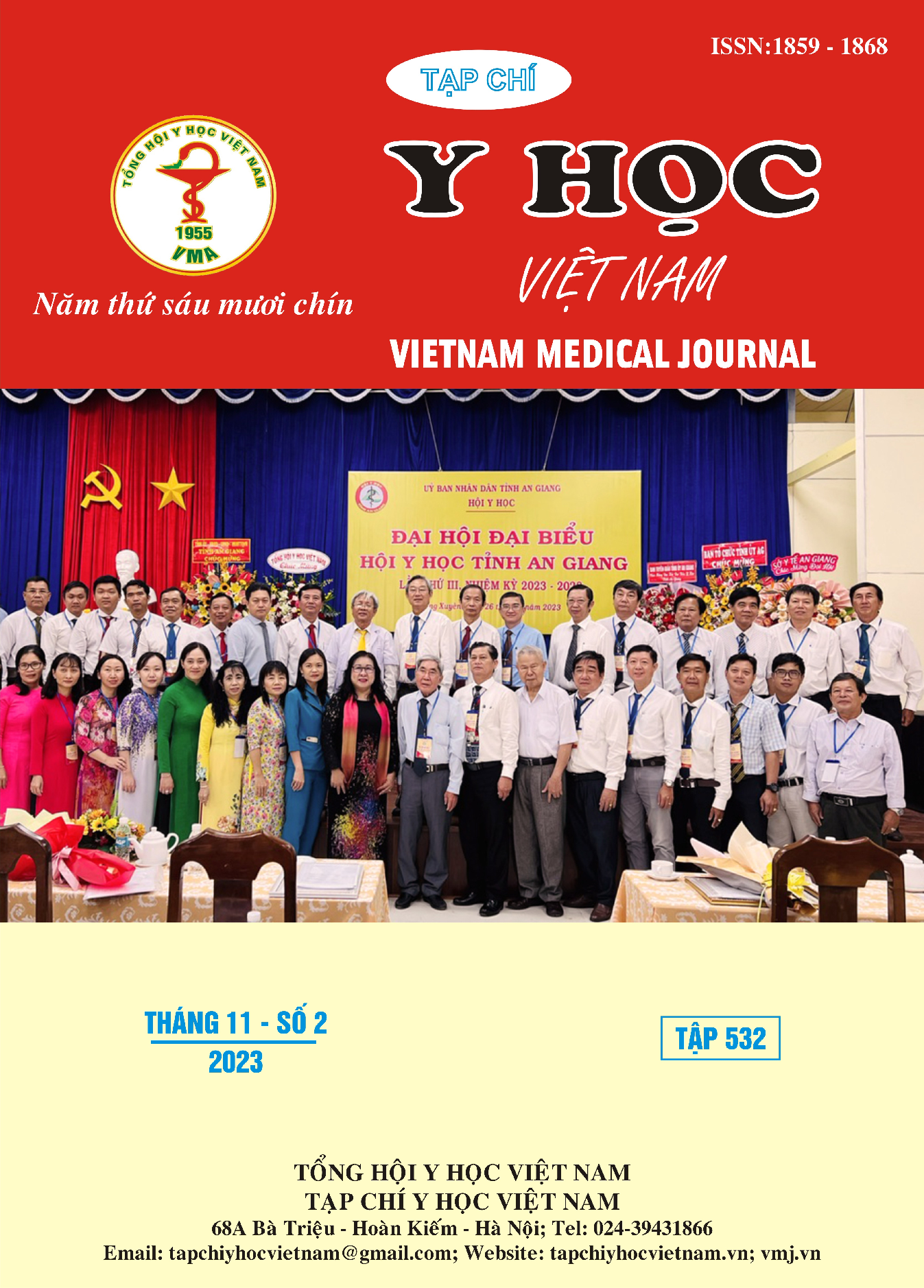EVALUATION OF ANTIBIOTIC USAGE AND INTERVENTION OUTCOMES ON RATIONAL ANTIBIOTIC USE IN INPATIENT TREATMENT AT CAN THO CITY GENERAL HOSPITAL IN 2022-2023
Main Article Content
Abstract
Background: Antibiotics play a crucial role in treatment; however, if used improperly or self- administered, they can lead to consequences directly affecting human health. Objectives: The objective of this study was to determine the rate of rational antibiotic use, explore related factors, and evaluate the effectiveness of intervention through drug information and clinical pharmacology on the use of antibiotics in inpatient treatment at Can Tho City General Hospital in 2023. Materials and methods
The study subjects included medical records of patients aged 18 and older receiving inpatient treatment and physicians directly responsible for outpatient examinations. This was a cross-sectional descriptive study combined with non-controlled interventions. Results: The rate of medical records showing appropriate antibiotic use was 86.1%. Male doctors had a higher rate of inappropriate antibiotic prescription at 18.6% compared to female doctors at 2.8% (p < 0.001, OR 7.85, 95% CI OR = 2.38 –
25.87). Doctors with a university degree or higher had a higher rate of inappropriate antibiotic use at 17.8% compared to those with lower educational levels at 9.3% (p = 0.021, OR 2.11, 95% CI OR = 1.11 –
4.05). After the intervention, the rate of appropriate antibiotic usage in inpatient treatment has increased from 86.1% to 95.5%. Conclusions: The rate of appropriate antibiotic use in departments at Can Tho City General Hospital is relatively high and significantly improved after the intervention.
Article Details
Keywords
: antibiotics, antibiotic usage, safe and rational use, inpatient.
References
2. Naylor, N. R., Atun, R., Zhu, N., Kulasabanathan, K., Silva, S., Chatterjee, A., Knight, G. M., & Robotham, J. V. (2018), Estimating the burden of antimicrobial resistance: a systematic literature review, Antimicrobial
Resistance & Infection Control. 7(1), p. 58.
3. Atif, M., Sarwar, M. R., Azeem, M., Naz, M., Amir, S., & Nazir, K. (2016), Assessment of core drug use indicators using WHO/INRUD methodology at primary healthcare centers in Bahawalpur, Pakistan, BMC Health Serv Res. 16(1), p. 684.
4. Bệnh viện Đa khoa thành phố Cần Thơ (2021), Báo cáo tổng kết hoạt động của Bệnh viện Đa khoa Đa khoa thành phố Cần Thơ 2021 và Phương hướng hoạt động 2022, Cần Thơ.
5. Đỗ Trí Ngoan (2019), Nghiên cứu đặc điểm bệnh nhân và việc sử dụng thuốc kháng sinh tại bệnh viện Đa khoa, Tạp chí Y Dược học Cần Thơ, số 20/2019 năm thứ 5 ISSN 2354-1210.
6. Huỳnh Tấn Phát (2012), Khảo sát tình hình sử dụng kháng sinh ở khoa Hồi sức tích cực tại bệnh viện Đa khoa Trung Ương Cần Thơ từ tháng 10/2010 đến tháng 10/2011, Luận văn Dược sĩ đại học, Trường Đại học Y Dược Cần Thơ.
7. Nguyễn Thị Hồng Phiến (2017), Nghiên cứu tình hình sử dụng và đánh giá kết quả can thiệp việc sử dụng kháng sinh hợp lý tại Bệnh viện Nhi đồng Cần Thơ năm 2016-2017, Luận án chuyên khoa cấp II, Đại học Y Dược Cần Thơ.
8. Tiêu Hữu Quốc (2019), Nghiên cứu tình hình sử dụng kháng sinh an toàn, hợp lý cho bệnh nhân điều trị ngoại trú tại Trung tâm Y tế huyện Châu Thành – tỉnh Sóc Trăng năm 2018, Luận văn chuyên khoa cấp II, Trường Đại học Y Dược Cần Thơ.


